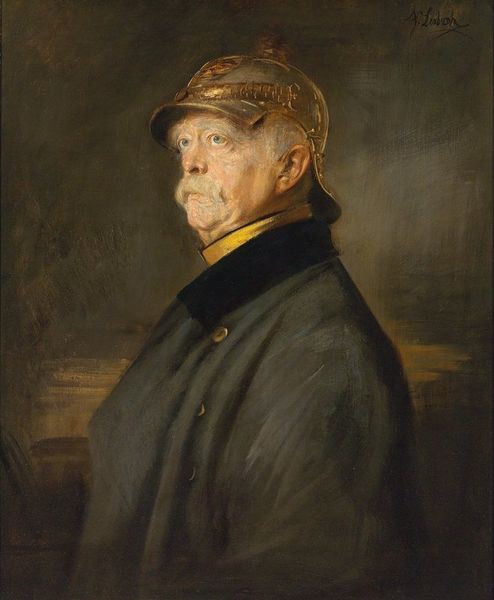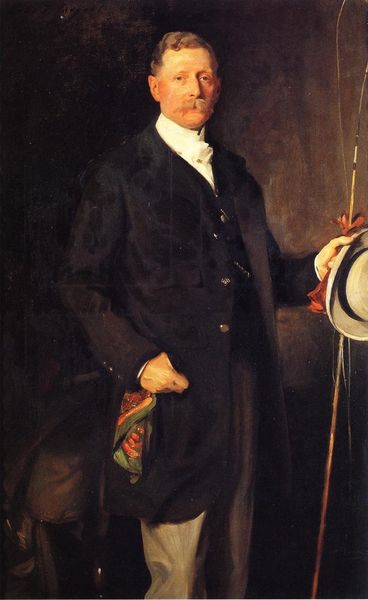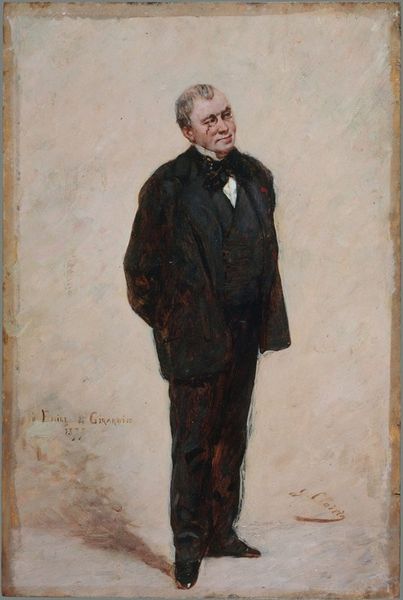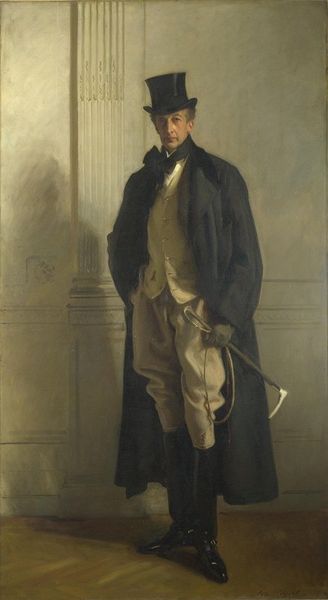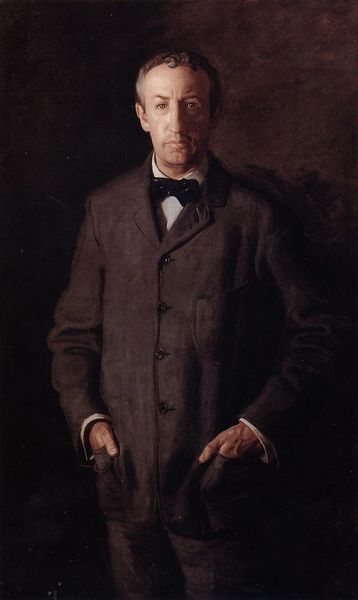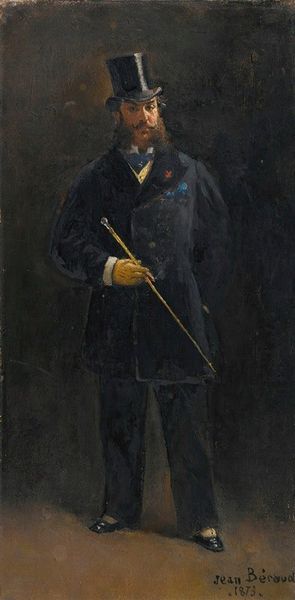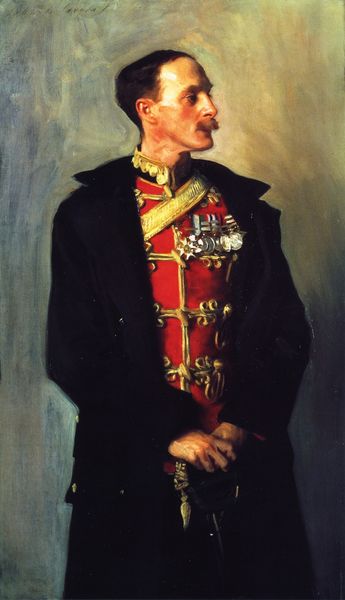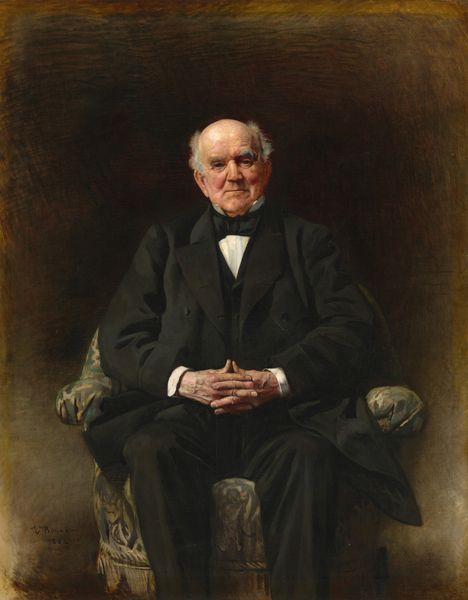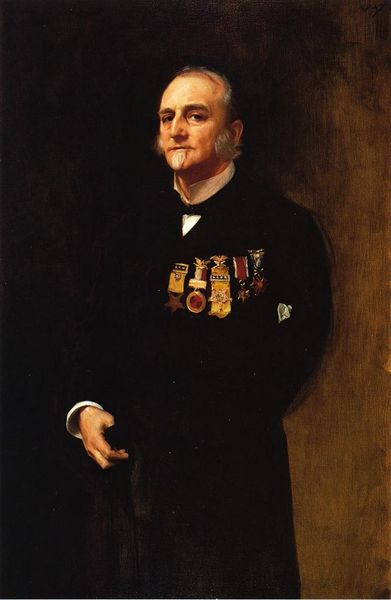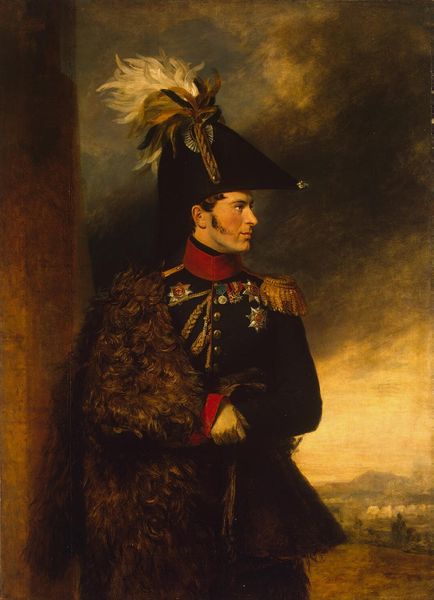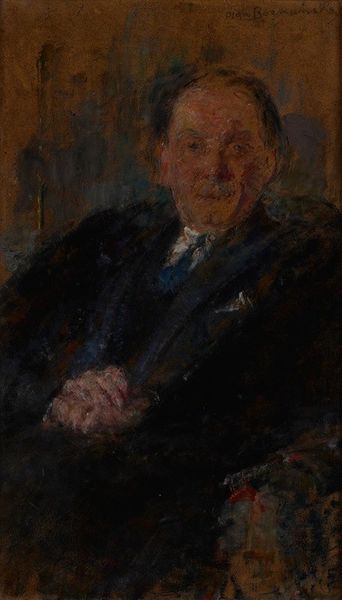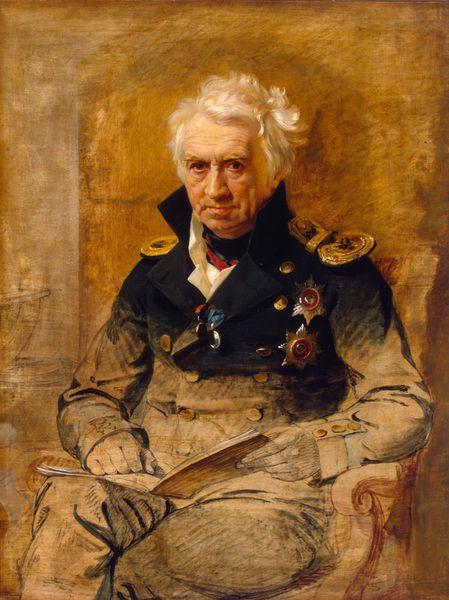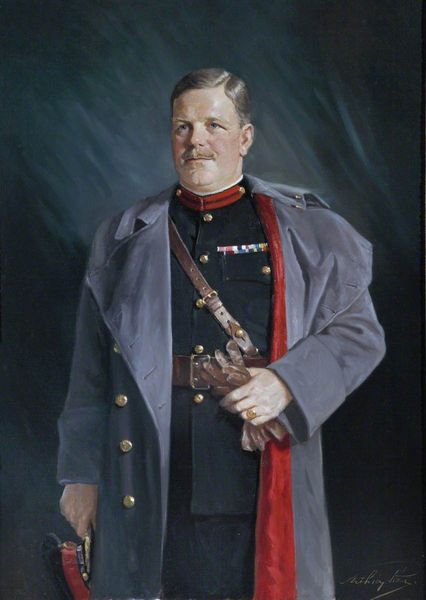
painting, oil-paint
#
portrait
#
figurative
#
painting
#
oil-paint
#
german-expressionism
#
history-painting
#
academic-art
#
portrait art
#
realism
Copyright: Public Domain: Artvee
Curator: Okay, let’s talk about Franz von Lenbach's 1892 "Portrait of Prince Otto von Bismarck." Quite the imposing figure, wouldn’t you agree? Editor: Imposing is right! He looks like he could single-handedly negotiate a peace treaty and then glare the other signatories into oblivion. All that weight—historical, political, personal—seems concentrated in that heavy, shadowed coat. It almost feels like it's consuming him. Curator: Indeed. Consider the helmet, though. In heraldry and iconography, helmets often symbolize protection, nobility, and even invincibility. The meticulous detail given to its golden ornamentation speaks to power and status, a visual representation of Bismarck's influence within the German Empire. Editor: True, but doesn't the light seem to be actively avoiding his face? That shadow throws everything off for me. All that shiny regalia and military bearing can’t hide a certain…melancholy. It’s as if he's a monument contemplating his own legacy in the twilight. He just looks like someone who's lived through it all, or perhaps created a lot of the “all” himself. Curator: He certainly was a complex figure. Beyond the visual language of power, his face, etched with experience, reflects the tumultuous era of German unification he dominated. Look closely, and you might perceive the burden of leadership and the isolation of immense authority. Symbols of order can mask inner turmoil. Editor: Yes, it almost feels as if the artist wants you to see past the symbol to the very human ambivalence lurking beneath the Iron Chancellor facade. I almost want to write a poem about his mustache; so iconic and yet…sort of sad too? Is that weird? Curator: Not at all! He reminds me of other great figures from history: Caesar and Charlemagne among them. There is the symbolism of power and authority, as you indicate, that does connect them all. They carry the cultural weight. The image then reminds people of the rise and fall of their kingdoms. Editor: Okay, I get it now: A visual synecdoche where one portrait embodies a historical narrative. Okay, time for tea, I think! Curator: Indeed, it is a good place to conclude for now. Let us have it over this painting again someday!
Comments
No comments
Be the first to comment and join the conversation on the ultimate creative platform.
